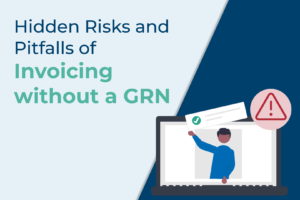As 2025 ends, every finance team begins its year-end accounting routine. This includes checking that all expenses are recorded, posting accruals for items that were received but not yet invoiced, updating adjusting entries, and making sure the books match the general ledger. Teams also verify supplier balances, prepare tax-related reports, and organise documents that auditors will need.
For Accounts Payable (AP), these steps become even more important because AP holds most of the data that flows into the final closing. Invoices must be matched, bill books and vendor statements reconciled, and any missing documents tracked down before the books lock for the year.
Pressure builds when invoice volumes spike. Organizations experience invoice volume surges ranging from 5% annual growth in normal periods to 44–67% spikes during peak business cycles, and manual tasks slow everything down.
Why Invoice Volumes Soar in Year End
Year End brings more than extra invoices. It creates a sharp rush of activity across vendors, departments, and finance teams, all pushing Accounts Payable to work faster while keeping records accurate and compliant. The spike usually comes from:
- Vendors trying to close their accounts.
- Departments using leftover budgets.
- Projects are finishing and generating final bills.
This sudden rise in volume impacts bill payment timelines and increases the chances of delays or missed entries.
Year-End Tasks Every AP Team Must Complete
AP also needs to complete a set of core year-end tasks that keep the bill books accurate. These activities make sure every expense is recorded, every balance is correct, and the team is fully ready for audits and reporting. Key tasks include:
- Reconcile accounts so invoices and payments match.
- Prepare audit documents and validate records.
- Post adjustments and accruals for pending expenses.
- Reconcile vendor statements for accurate balances.
- Support budgeting and planning for next year with year-end data.
This mix of heavy volume and strict compliance demands makes the year-end close one of AP’s most challenging periods.
How to prepare for a Smoother Year-End
From an AP perspective, the best way to handle year-end pressure is to reduce manual work early. Start automating the tasks that slow you down the most. Let your system flag exceptions like duplicate invoices, mismatched amounts, missing purchase orders, or wrong vendor details. This helps your team spend time fixing issues instead of searching for them.
Other steps AP teams should take:
- Talk to vendors early – Confirm invoice cutoff dates and any outstanding balances so invoices arrive on time.
- Reconcile often – Set weekly milestones and match your subledger to the general ledger and vendor statements weekly.
- Standardise AP workflows. Set Document approval rules and escalation paths so everyone follows the same process under pressure.
- Prioritize high-value and time-sensitive invoices so important bill payments are never delayed.
- Automate accruals for goods or services that are received but not yet invoiced.
- Use 3-way matching to reduce exceptions and speed approvals.
- Centralise documents for easy audit access.
- Monitor dashboards daily to track pending approvals, exceptions, and payments.
How Automation Helps You Close the Books Faster
Year-end is the best time to bring automation into AP. it’s the time to decide you need one. The invoice surge, tight deadlines, and audit pressure make the exact pain points obvious. This period gives AP a real-world view of the features that matter most, helping you choose the right solution once the close is complete.
When you evaluate automation, focus on the capabilities that remove the exact bottlenecks you’re feeling right now:
- ERP-integrated invoice routing keeps approvals moving, so invoices don’t get stuck and bill payments stay on schedule.
- Automated validation and matching clear most invoices right away, cutting down on last-minute corrections.
- Digital storage with audit-ready trails saves hours of searching for documents and makes audits smoother.
- Real-time dashboards show what needs attention so the team can fix issues before they grow.
- Smarter exception handling spots problems early and sends them to the right person, reducing back-and-forth.
- Support for e-invoice formats and automated compliance reduces rework and speeds cross-border processing.
That way you can turn year-end lessons into a practical plan for next year without adding risk during your busiest period.
Conclusion
A smooth year-end close isn’t about working longer hours. It comes from having the right systems that handle volume and give you instant visibility into every invoice and payment. With proper planning, automation, and real-time insight, finance teams can wrap up the close smoothly and begin the coming year with greater confidence. The right tools help you manage invoice volume, cut down errors, and stay in control of every payment step.
If you’re ready to simplify your close and handle invoices at scale without the usual chaos, explore how Symtrax can help. Book a demo and see what automated invoice processing can look like for your AP team.


